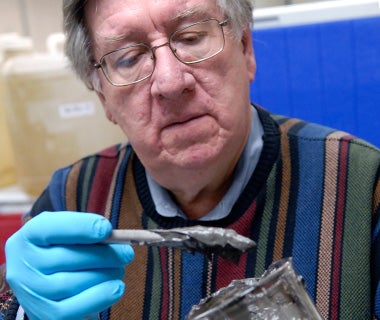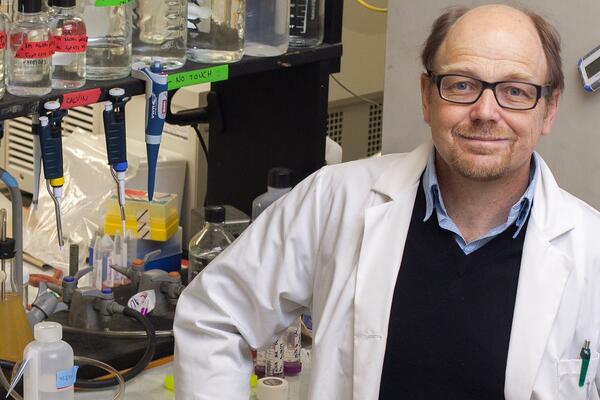
A river runs through it: Keeping an eye on the Alberta oil sands
Airborne contaminants from oil sands just one risk to Alberta’s longest river, says Waterloo scientist.

Airborne contaminants from oil sands just one risk to Alberta’s longest river, says Waterloo scientist.
By Dave Pink Communications and Public AffairsThe world will need petroleum for many years, says a Waterloo biology professor. The challenge, he says, will be getting it out of the ground while leaving the smallest possible environmental footprint.
For almost two decades, George Dixon — a renowned eco-toxicologist — has been a major player on the team of scientists examining the ecological impact of the Alberta oil sands and the efforts to contain any environmental damage to the Athabaska River.
 “We’re looking for the potential for the deposit of airborne contaminants into the river,” he says. As well, he says toxicology tests are being conducted to determine if the industries that are extracting the oil from the ground will ever be allowed to discharge any waste-water effluent into the river.
“We’re looking for the potential for the deposit of airborne contaminants into the river,” he says. As well, he says toxicology tests are being conducted to determine if the industries that are extracting the oil from the ground will ever be allowed to discharge any waste-water effluent into the river.
“For now, there are no large pipes dumping into the river, and maybe there will never be,” he says.
Dixon devotes a good deal of time to this work, but it’s only a part-time job. He’s also the university’s vice-president of research. For more than five years he’s been leading the office that identifies and assesses research opportunities, while making sure that the $190 million annual research budget is wisely spent. As well, it’s been Dixon’s job “to advance our research profile outside of the university.”
Multi-metallic soup
Still, Dixon takes a hands-on interest in the oil sands project, in particular the long-term toxicity of the byproduct metals that are flushed to the surface along with the oil-rich bitumen. There’s been plenty of research on the effects of isolated metals on bio-organisms, he says, but not much is known about the effects of the multi-metallic soups that result from the extraction process. “The question is: How do you predict the toxicity of a mixture of metals at any given time?” asks Dixon.
Then, there’s concern over the attempts at remediation for the water used in the extraction process. One major oil sands processor has already started to drain that water into an end-pit lake, where it is hoped it will, over time, blend in with the natural environment. “Now we have to look at the mechanisms for monitoring these systems to see if they develop as lakes,” he says.

Read more
Here are the people and events behind some of this year’s most compelling Waterloo stories

Read more
Discovery of a thick atmosphere on a lava world reshapes our understanding of rocky exoplanets

Dr. Brian Dixon, professor of biology at the University of Waterloo says there is a link between cold weather and getting sick. (University of Waterloo)
Read more
Waterloo researcher shares why we get sick when the mercury dips
The University of Waterloo acknowledges that much of our work takes place on the traditional territory of the Neutral, Anishinaabeg, and Haudenosaunee peoples. Our main campus is situated on the Haldimand Tract, the land granted to the Six Nations that includes six miles on each side of the Grand River. Our active work toward reconciliation takes place across our campuses through research, learning, teaching, and community building, and is co-ordinated within the Office of Indigenous Relations.